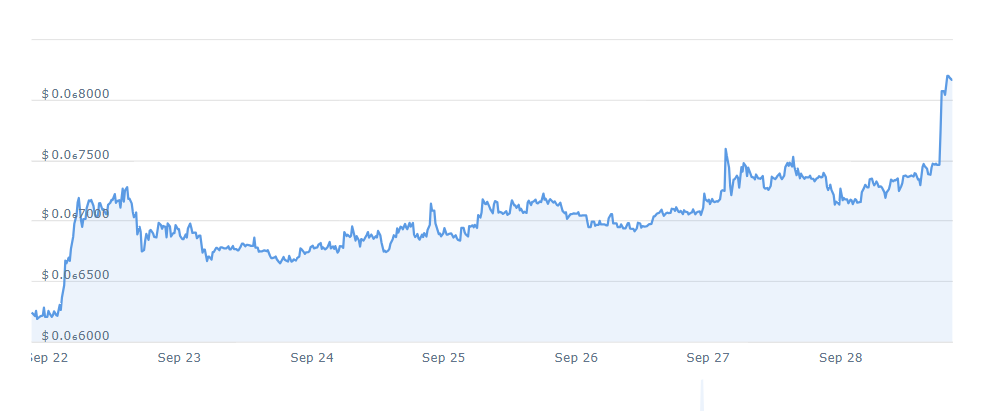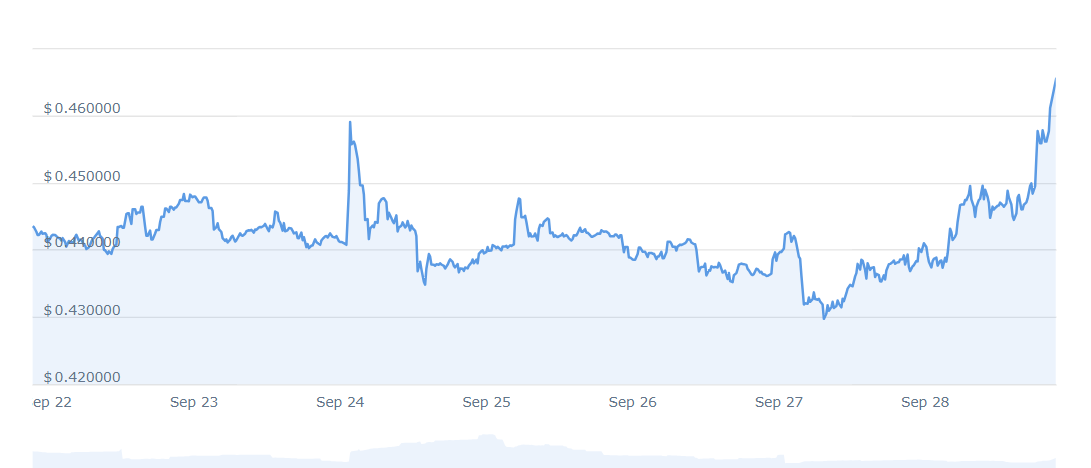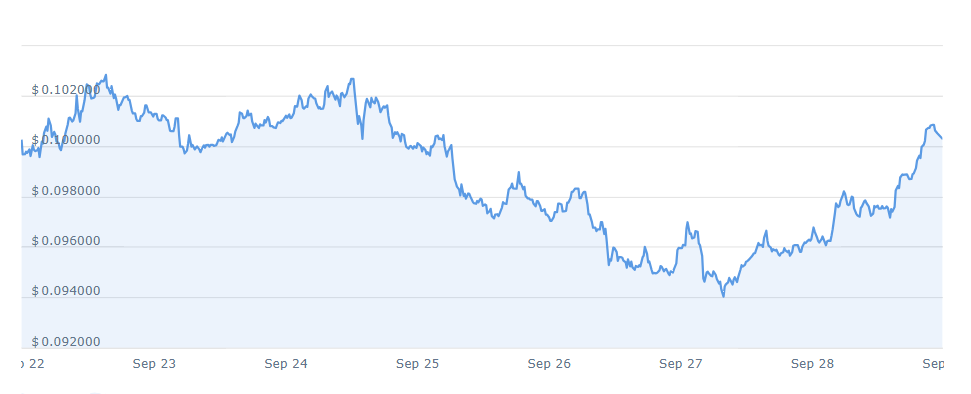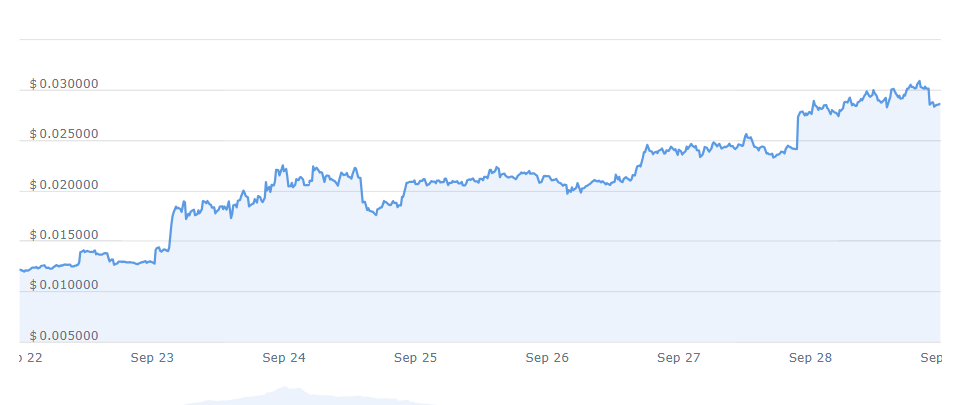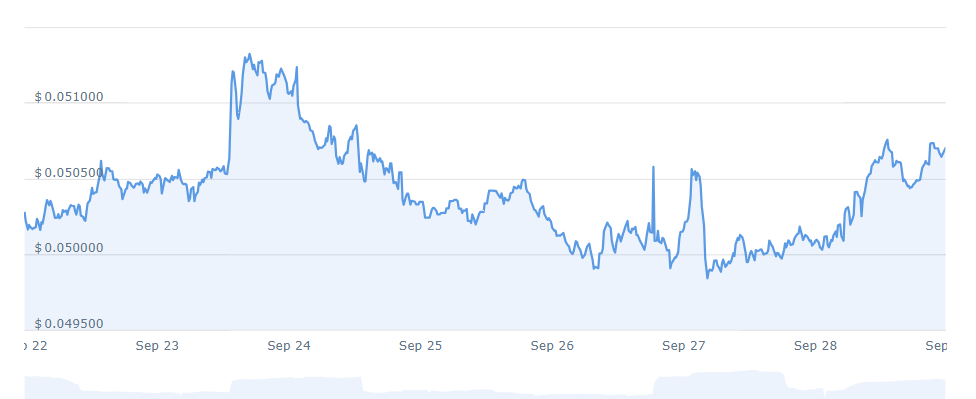Join Our Telegram channel to stay up to date on breaking news coverage
Major tokens have a high upside but are expensive to purchase. We present a list of the best cheap digital currencies to invest in this month.
The crypto space has witnessed the US Securities and Exchange Commission (SEC) announce an additional delay in reviewing applications from firms seeking approval to list the first Bitcoin exchange-traded fund (ETF) in the United States.
This delay is noteworthy as the race to launch a US spot-Bitcoin ETF intensifies, with the first mover expected to gain a significant advantage. Currently, over 10 firms have pending ETF applications with the SEC, all designed to be physically backed by Bitcoin.
This development marks a significant moment in the cryptocurrency industry, where the awaited approval of a Bitcoin ETF could open doors for more institutional participation and legitimacy.
6 Best Cheap Crypto To Buy Now Under 1 Dollar in September 2023
Investing in affordable tokens can be an enticing prospect for some investors. These assets hold the potential for an upward tick.
We’ve compiled a list of cryptocurrencies priced under 1 Dollar for investors to consider.
1. Pepecoin (PEPE)
PEPE is a deflationary memecoin launched on the Ethereum blockchain. It seeks to carve a niche in the meme-based cryptocurrency market.
A feature that PEPE implements is a no-tax policy, abstaining from transaction fees. This approach serves to broaden its user base by ensuring cost-effective transactions.
Additionally, PEPE introduces a unique redistributive system that rewards long-term stakers, fostering a sense of commitment within the community. This system incentivizes users to retain their PEPE tokens for extended periods.
the 10.6 Trillion tokens left in the $PEPE multisig have just been transferred to a new address: 0x9f5E46E4990dee30665b2e803BA134564D1e087F
txn: https://t.co/ONa5se54YU pic.twitter.com/f5e0KyCCBa
— Pepe (@pepecoineth) August 26, 2023
The project also employs a burning mechanism to maintain token scarcity over time, potentially enhancing its value proposition. Another aspect of PEPE is its connection to the Pepe the Frog character, a figure with a controversial history.
2. Sui (SUI)
Sui is a Layer 1 blockchain and smart contract platform designed to enhance digital asset ownership. The platform’s foundation lies in its object-centric model based on the Move programming language.
This approach enables parallel execution, achieving sub-second finality and managing various on-chain assets effectively. Moreover, Sui offers horizontal scalability in processing and storage. This makes it cost-effective for supporting many applications emphasizing speed and efficiency.
A distinctive feature of the Sui network is its ability to process group transactions in parallel. It can effectively differentiate and process components like objects, resources, and accounts.
Sui’s unique feature set includes directly passing assets, such as non-fungible tokens (NFTs), as function arguments. This object-centric approach also allows for the use of complex data structures. It also facilitates the storage of assets within these structures or the assets themselves.
✨It's here! zkLogin is now LIVE on MainNet!✨
Builders, start offering frictionless account creation to your users.
When integrating with zkLogin, there are important things to consider.
Review these best practices for success.👷https://t.co/9xLkRkMn1b
— Sui (@SuiNetwork) September 28, 2023
Similar to other blockchains, Sui provides a ledger of every transaction. Its developer-friendly approach enables developers to track relevant transactions without the need to query unrelated decentralized applications (dApps). This streamlined on-chain data access minimizes costs associated with queries.
SUI Token serves as the native cryptocurrency of the Sui blockchain, built on the Move open-source language. SUI’s characteristics include its permissionless nature, impressive speed, and security capabilities. It processes simple transactions instantly and handles complex transactions in less than three seconds.
3. Algorand (ALGO)
Algorand is a publicly licensed PoS blockchain protocol seeking to address critical challenges in the blockchain landscape. It places a strong emphasis on scalability, security, and decentralization.
Algorand claims to achieve over 1000 transactions per second (TPS) with a latency of less than 5 seconds. This level of throughput is claimed to be comparable to major payment networks while upholding security and decentralization.
Algorand is architected as an autonomous, decentralized network that accommodates a wide spectrum of applications. Its core focus centers on being secure, scalable, and efficient—essential attributes for real-world applications. The platform is positioned to support computations requiring dependable performance guarantees to foster new trust forms.
Algorand is its innovative consensus mechanism, which addresses the well-known “impossible triangle” problem often associated with blockchain technology. Other prominent public chain projects are thought to have limitations in their consensus mechanisms. Algorand is presented as a potential solution to these issues.
Today's prep call was 🔥
If you want to know how to impress investors for #BuildABull, then don't miss these insights from @VitruvianBoogie and @pokeapallascat.
🗓️ Thu, Sep 28 @ 10:30am ET
Got any questions? Drop them below.
Set your reminder: https://t.co/hHcWgYO1fw pic.twitter.com/M9frSihnbk
— Algorand Foundation (@AlgoFoundation) September 27, 2023
Algorand’s primary objective is to enhance transaction speeds and overall efficiency. This is in response to other blockchain networks’ comparatively slower transaction times. It underscores lower transaction fees and the absence of mining, setting it apart from energy-intensive processes like Bitcoin’s.
4. Gifto (GFT)
Gifto represents a blockchain platform within the Web 3 ecosystem that offers a variety of functionalities to its user base. Its core functionality facilitates blockchain-based gifts’ creation, storage, and transmission.
This encompasses e-cards, Profile Pictures (PFPs), Non-Fungible Tokens (NFTs), and digital red envelopes. Furthermore, it allows users to make cryptocurrency donations to charitable causes, broadening its range of applications.
Throughout its evolution, Gifto has progressively expanded its feature set to serve its community better. it has since grown to encompass a marketplace, a Web 3 wallet, and other projects.
We need everyone to help test our newest version of GFT wallet.
— Gifto (@GiftoMetaverse) September 5, 2023
Gifto offers a comprehensive Web 3 blockchain platform with various features, including blockchain gift creation, cryptocurrency donations for charitable purposes, and a secure Web 3 wallet.
5. Bitcoin Minetrix (BTCMTX)
The fundamental concept of Bitcoin Minetrix centers on users staking BTCMTX tokens to earn cloud mining credits. The intent is to decentralize control and provide token holders with a more secure and transparent mining experience.
Bitcoin Minetrix’s staking pool has attracted substantial participation, with over 400,000 BTCMTX tokens currently locked in staking. The project boasts an annual percentage yield (APY) of 103,225%. However, it’s important to note that this rate is expected to decrease as additional tokens enter staking.
Despite being in its early stages of development, Bitcoin Minetrix is gaining traction, exemplified by the successful ongoing BTCMTX presale. The presale has already generated over $140,000 in funds by selling BTCMTX tokens at $0.011 per token.
The stake-to-mine concept is an innovative idea 💡
Making #Bitcoin mining achievable for all #Crypto enthusiasts and here's why.
Users of #BitcoinMinetrix require nothing more than an Ethereum-compatible wallet, such as #MetaMask, making things incredibly straightforward. pic.twitter.com/XTNKtrJn9R
— Bitcoinminetrix (@bitcoinminetrix) September 29, 2023
Out of a total token supply of 4 billion, 70% (2.8 billion BTCMTX) are available during the presale phase, and prospective investors can acquire them using ETH or USDT. Importantly, the minimum investment required is a modest $10, making this crypto-mining opportunity accessible to a broad range of participants.
Bitcoin Minetrix’s presale has captured the attention of prominent crypto influencers and experts, including Jacob Bury. The presale price is set to increase incrementally until BTCMTX is listed on major exchanges, signaling that the window of opportunity for acquiring tokens at the lowest possible price may be closing.
6. Cronos (CRO)
Cronos (CRO) is the native cryptocurrency token within the Cronos Chain, an open-source decentralized blockchain platform. This blockchain is an integral part of Crypto.com’s suite of solutions, aiming to foster the global adoption of cryptocurrencies.
It aims to enhance personal financial control, fortify user data security, and safeguard user identities. The CRO blockchain serves as a utility primarily designed for users of Crypto.com’s payment, trading, and financial services.
CRO token holders can actively participate in the network by staking their coins on the Crypto.com Chain. This role involves acting as validators and, in return, earning fees for processing transactions on the network. Additionally, CRO tokens can effectively settle transaction fees on the Cronos Chain.
Now live in the Derivatives Exchange: $GLMR Perpetual Contract 🚀
⚡2.7M TPS matching engine
⚡50us ultra-low core latency
⚡Stake $CRO for lower trading feesTrade Now 👉 https://t.co/GO19bJkUjf pic.twitter.com/dbbm1BWoyA
— Crypto.com Institutional (@Cryptocom_Insto) September 29, 2023
Cronos relies on Ethermint technology, enabling swift porting of applications and bridging to the Crypto.org Chain. Moreover, Cronos can interact with other IBC-enabled chains such as Cosmos Hub, Osmosis, and Injective in a decentralized manner.
Cronos IBC Protocol serves as a means for various blockchains to communicate, allowing the transfer of value, interchange of assets and services, and connection without encountering the scaling issues that some of the largest blockchains face today.
Read More
Join Our Telegram channel to stay up to date on breaking news coverage


